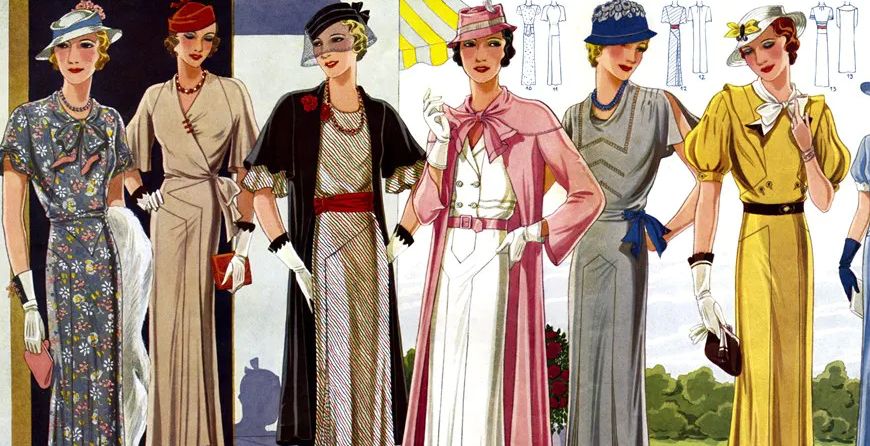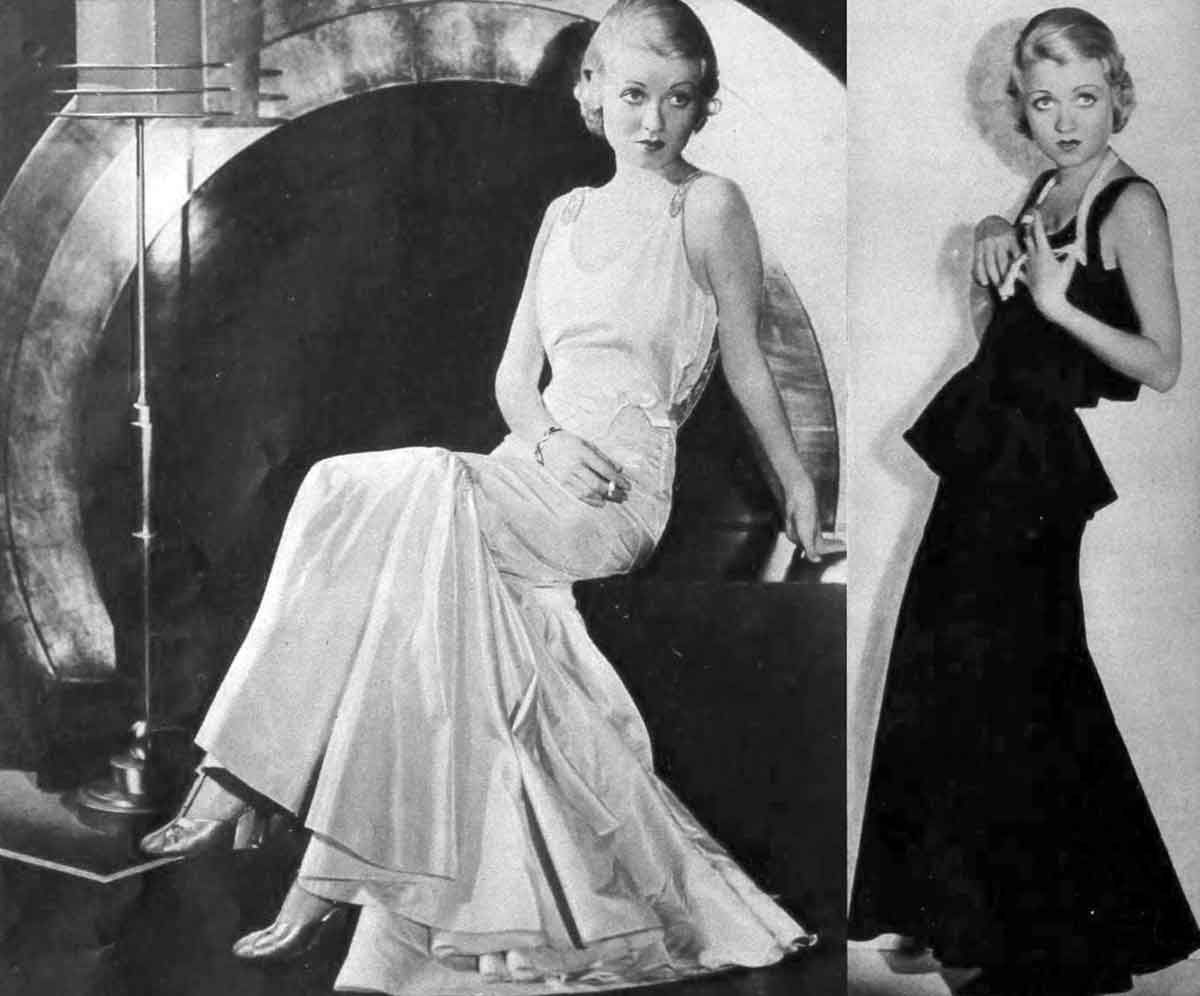The 1930s marked a significant period in the history of fashion, as the world grappled with economic turmoil and social change. Despite the challenges faced during this tumultuous decade, the fashion industry found inspiration in creativity, elegance, and resilience. In this article, we embark on a captivating journey through time to explore the captivating fashion trends of the 1930s. From the glamorous Hollywood influence to the impact of the Great Depression, we delve into the who, what, when, and how of this iconic era. Join us as we relive the essence of the 1930s fashion scene.
1. The Influencers: Who Shaped the Fashion Landscape?
The fashion landscape of the 1930s was influenced by several notable individuals who left an indelible mark on the industry. Let's take a closer look at some of these influential figures:
a) Coco Chanel - Revolutionizing Women's Fashion
Coco Chanel, a visionary designer and businesswoman, played a pivotal role in transforming women's fashion in the 1930s. She introduced timeless designs that emphasized comfort and simplicity while still exuding sophistication. Chanel's signature tweed suits, little black dresses, and chic accessories became synonymous with elegance and femininity.
Example: "Coco Chanel's introduction of the little black dress revolutionized evening wear, providing women with a versatile and stylish option for various occasions."
b) Adrian - Redefining Hollywood Glamour
Gilbert Adrian, known simply as Adrian, was a renowned costume designer who brought glamour to the silver screen. His collaborations with major Hollywood studios elevated the fashion standards of the time. With his exquisite creations, Adrian dressed iconic stars like Greta Garbo and Joan Crawford, leaving an indelible mark on the fashion industry.
Example: "Adrian's striking shoulder-padded gowns became a hallmark of 1930s Hollywood glamour, emphasizing strong silhouettes and empowering women with their boldness."
2. The Fashion Landscape: What Defined the Era?
The 1930s witnessed a blend of influences that translated into iconic fashion trends. Let's explore the defining elements of this era:
a) Bias-cut Silhouettes - Draped Elegance
One of the most significant developments in 1930s fashion was the introduction of bias-cut silhouettes. This innovative technique involved cutting fabric diagonally across the grain, allowing it to drape gracefully over the body. Bias-cut dresses accentuated natural curves and created an aura of sophistication and sensuality.
Example: "Bias-cut silk gowns clung to the body, creating a flowing and ethereal silhouette reminiscent of Greek goddesses."
b) Art Deco Influence - Geometric Glamour
Art Deco, an influential artistic movement, had a profound impact on fashion during the 1930s. The geometric shapes, bold lines, and intricate patterns associated with Art Deco found their way into textiles, jewelry, and accessories. The result was a glamorous fusion of modernism and luxury.
Example: "Art Deco-inspired accessories, such as chunky bracelets adorned with geometric motifs, added a touch of opulence to any ensemble."
3. The Great Depression: When Fashion Transformed

The global economic downturn of the 1930s, known as the Great Depression, had a profound effect on fashion. As society grappled with financial hardships, fashion responded with innovation and adaptability.
a) Thrift and Resourcefulness - Making Do with Less
Thrifty fashion became a necessity during the Great Depression. To cope with limited resources, people embraced mending, repurposing, and creative styling. Fashion-conscious individuals found ingenious ways to update their wardrobes without breaking the bank.
Example: "Women often transformed their old dresses by adding innovative collars or embellishments, breathing new life into otherwise worn-out garments."
b) Daytime vs. Evening Wear - A Shift in Priorities
The economic constraints of the era led to a reevaluation of fashion priorities. The emphasis shifted from lavish evening wear to practical daytime attire. Simple, tailored dresses made from affordable fabrics became popular, reflecting a more modest approach to dressing.
Example: "Daytime dresses featured puffed sleeves, defined waists, and knee-length hemlines, perfectly suited for the demands of daily life during challenging times."
4. How to Embrace 1930s Fashion Today?

If you're captivated by the allure of 1930s fashion and wish to incorporate its essence into your modern wardrobe, here are some tips to help you achieve an authentic vintage look:
a) Silhouette Matters - Seek Bias-Cut Styles
To capture the elegance of the1930s, opt for garments with bias-cut silhouettes. Look for dresses or skirts that flow gracefully over the body and accentuate your natural curves. Choose fabrics like silk or satin to enhance the draping effect.
b) Embrace Art Deco Accessories
Add a touch of 1930s glamour to your outfits with Art Deco-inspired accessories. Look for geometric-shaped jewelry, such as statement earrings or chunky bracelets. Consider embellished headbands or hair clips adorned with intricate patterns to channel the spirit of the era.
c) Pay Attention to Details
Incorporate small details that were popular during the 1930s to complete your vintage look. Opt for puffed sleeves, delicate collars, or decorative buttons on blouses or dresses. Don't forget to choose footwear that complements the era, such as T-strap heels or Mary Jane pumps.
5. Pros and Cons of Embracing 1930s Fashion
As with any fashion trend, there are pros and cons to consider when embracing 1930s fashion:
Pros:
- Timeless Elegance: The fashion of the 1930s exudes timeless elegance and sophistication.
- Figure-Flattering Silhouettes: Bias-cut styles can enhance your natural curves and create a graceful silhouette.
- Unique Vintage Appeal: Embracing 1930s fashion allows you to stand out with a unique vintage aesthetic.
Cons:
- Limited Availability: Finding authentic vintage pieces from the 1930s can be challenging and costly.
- Modern Adaptation Required: Incorporating 1930s fashion into your wardrobe may require some adaptation to suit contemporary styles and preferences.
- Less Casual Options: 1930s fashion tends to lean towards more formal or semi-formal attire, which may not be suitable for all occasions.
6. Alternatives to 1930s Fashion

If you appreciate vintage fashion but the 1930s style doesn't resonate with you, there are alternative eras you can explore:
a) The Roaring Twenties - Flapper Era
The 1920s were known for their flapper fashion, characterized by loose, dropped-waist dresses, feathered headbands, and beaded accessories. This era offers a more playful and exuberant take on vintage fashion.
b) The 1950s - Retro Sophistication
For a more retro and feminine style, the 1950s offer an array of options. Think full-skirted dresses, cinched waistlines, and polka dots or floral prints. It's a great era for embracing a classic, hourglass silhouette.
7. Step-by-Step Guide: Achieving the 1930s Look
To help you achieve an authentic 1930s-inspired look, here is a step-by-step guide:
Step 1: Start with a bias-cut dress or skirt in a flowing fabric such as silk or satin.
Step 2: Add puffed sleeves or delicate collars for a touch of femininity.
Step 3: Choose Art Deco-inspired accessories like geometric-shaped jewelry or embellished headbands.
Step 4: Finish the look with T-strap heels or Mary Jane pumps.
8. Comparing 1930s Fashion with Other Eras

While each fashion era has its unique charm, let's compare the 1930s fashion with two other notable periods:
a) 1920s vs. 1930s
The 1920s, also known as the Roaring Twenties, introduced the flapper style, characterized by shorter hemlines, dropped waistlines, and a more boyish silhouette. In contrast, the 1930s embraced a more feminine and figure-flattering approach with longer hemlines, nipped waists, and bias-cut silhouettes.
b) 1930s vs. 1950s
The 1950s fashion had a more structured and glamorous appeal compared to the 1930s. While both eras emphasized femininity, the 1950s showcased full skirts, cinched waists, and an overall more polished look. The 1930s, on the other hand, focused on draped elegance and a softer silhouette.
9. Tips for Embracing 1930s Fashion

Here are some additional tips to fully embrace the essence of 1930s fashion:
- Look for vintage-inspired clothing brands that recreate the aesthetic of the 1930s.
- Study fashion magazines and films from the era to gain inspiration and insights into styling.
- Experiment with hairstyles popular in the 1930s, such as finger waves or soft updos.
- Don't be afraid to mix modern elements with vintage pieces to create a unique and personalized look. 5.
Unique FAQs After The Conclusion
1. Can I wear 1930s fashion for everyday casual looks? While the 1930s fashion tends to lean towards more formal or semi-formal attire, you can certainly adapt the style for everyday casual looks. Opt for separates like high-waisted trousers paired with a blouse or a midi-length skirt with a tucked-in t-shirt for a more relaxed approach to 1930s fashion.
2. Where can I find authentic vintage pieces from the 1930s?
Authentic vintage pieces from the 1930s can be found in specialized vintage boutiques, thrift stores, and online platforms that cater to vintage clothing. It's important to do your research and verify the authenticity of the garments before making a purchase.
3. How can I incorporate 1930s fashion into my modern wardrobe?
To incorporate 1930s fashion into your modern wardrobe, focus on key elements such as bias-cut silhouettes, puffed sleeves, delicate collars, and Art Deco-inspired accessories. Mix and match these vintage-inspired pieces with your contemporary clothing to create a unique fusion of styles.
4. What hairstyles were popular during the 1930s? Hairstyles during the 1930s were often characterized by finger waves, pin curls, and soft updos. These hairstyles complemented the elegant and feminine fashion of the era. You can learn different techniques for achieving these hairstyles through online tutorials or by seeking the assistance of a hairstylist experienced in vintage hair.
5. Are there any modern designers inspired by 1930s fashion? Yes, many contemporary designers draw inspiration from the elegance and sophistication of 1930s fashion. Designers like Ralph Lauren, Gucci, and Prada have incorporated elements of the 1930s into their collections, creating modern interpretations of the vintage aesthetic.
Conclusion
Embracing 1930s fashion allows you to transport yourself to a time of timeless elegance and grace. The bias-cut silhouettes, Art Deco accessories, and attention to detail exemplify the unique charm of this era. While finding authentic vintage pieces may be challenging, there are modern alternatives and ways to incorporate the style into your everyday wardrobe. By following the step-by-step guide and experimenting with different elements, you can achieve a sophisticated and alluring 1930s look that is both nostalgic and timeless.




0 Comments